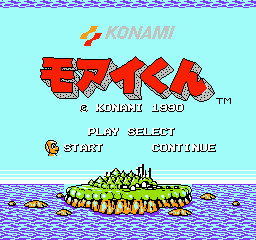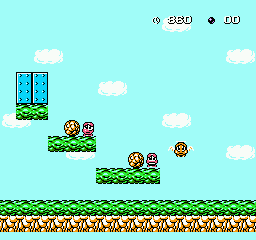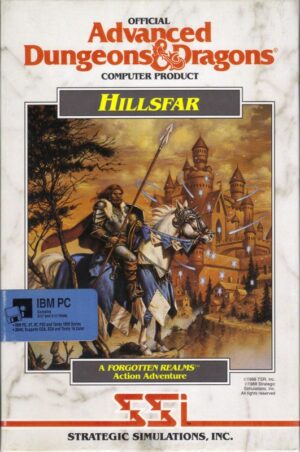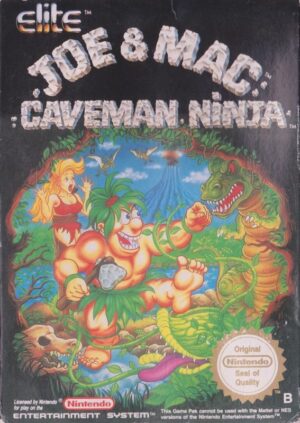Retro Replay Review
Gameplay
Moai Kun delivers a tight blend of platforming and puzzle-solving that keeps players engaged from the first level to the last. Each stage tasks you with collecting all the Moai statues scattered throughout a grid-like layout while racing against the clock, creating a constant sense of urgency. You’ll need to carefully plan your route, deciding when to push boulders into place and when to avoid them outright, as a single misstep can send you back to the start.
The controls are straightforward—move, jump and push rocks—but mastering the timing and momentum of each boulder presents a rewarding challenge. Enemies patrol predictable patterns, allowing you to bait them into traps or bypass them altogether by digging under or sprinting past. The puzzle element shines when you realize that every rock you push can either block your path or serve as a weapon against foes, turning simple pushes into strategic maneuvers.
Adding to the intensity is the ticking clock. Levels vary in length and complexity, but the timer reminds you that perfectionist exploration must be balanced with swift execution. For completionists, replaying stages to shave seconds off your time becomes an addictive pursuit, while casual players can focus on enjoying the clever stage design. Either way, Moai Kun’s gameplay loop remains fresh throughout its roster of challenges.
Graphics
As an 8-bit era title, Moai Kun leans into a charming pixel-art style that feels both nostalgic and distinct. The titular Moai statue is rendered with simple but expressive animations, bobbing along as it moves and nimbly hopping over obstacles. The color palette is bright and varied, ensuring each level—whether set in volcanic caverns, lush jungles or ancient ruins—has its own visual identity.
Environmental details are minimal but effective. Rocks, ground tiles and background elements have just enough shading to communicate depth, while enemies are clearly differentiated by color and shape. You’ll never mistake a rolling boulder for a harmless block, nor misidentify a fast-moving firefly-like foe, which is crucial when split-second decisions can mean life or death.
Although there are no fancy visual effects, the game’s design is consistent and clean. The UI elements—timer, collectible counter and level number—sit unobtrusively at the top of the screen, letting you focus on the action. In an era before widescreen hi-res graphics, Moai Kun’s visuals stand out for their clarity and timeless charm.
Story
While Moai Kun isn’t driven by a deep narrative, it offers enough context to keep you invested. You’re playing as Moai, the legendary Easter Island statue, who has mysteriously awakened to find fellow Moai bodies scattered and captive within labyrinthine chambers. Your mission: reunite your brethren and guide them safely to each level’s exit.
The backstory is light, but it’s enriched by subtle touches that tie into Konami’s wider universe—Moai’s cameos in other games are a fun Easter egg for longtime fans. As you progress, brief level titles suggest different environments and hazards, hinting at why these statues ended up in such perilous locations. Though you won’t find in-game cutscenes, the minimalist approach fits the arcade-style roots of the design.
Ultimately, the story serves as a simple narrative spine rather than a sprawling epic. It provides just enough motivation to care about each level’s objective and lends a playful mystique to Moai’s journey. For players seeking an intricate plot, the emphasis remains squarely on gameplay, but the concept of a wandering stone guardian has its own whimsical appeal.
Overall Experience
Moai Kun offers a delightful balance of challenge and accessibility, making it ideal for fans of retro platform puzzles and newcomers alike. Its bite-sized levels make it perfect for quick play sessions, yet its depth ensures that you can spend hours optimizing routes and mastering tricky sections. The sense of accomplishment from clearing a level with seconds to spare never grows old.
Despite its simplicity, the game’s design is surprisingly deep. You’ll learn to anticipate enemy movements, chain rock pushes to create cascading traps and memorize the most efficient paths—all while under the pressure of the clock. The learning curve is gentle, but the later stages ramp up the complexity considerably, providing a gratifying sense of progression.
In the end, Moai Kun stands out as a testament to focused design and timeless gameplay. Its blend of platforming precision, puzzle strategy and arcade urgency creates an experience that feels both nostalgic and refreshingly tight. If you’re on the lookout for a retro-inspired gem that rewards skill and creativity, Moai Kun should be on your shortlist.
 Retro Replay Retro Replay gaming reviews, news, emulation, geek stuff and more!
Retro Replay Retro Replay gaming reviews, news, emulation, geek stuff and more!









Reviews
There are no reviews yet.